Duke John Albert of Mecklenburg
Duke John Albert of Mecklenburg (German: Herzog Johann Albrecht zu Mecklenburg; given names John Albert Ernest Constantine Frederick Henry; 8 December 1857 – 16 February 1920)[1] was a member of the House of Mecklenburg-Schwerin who served as the regent of two states of the German Empire. He was first regent of the Grand Duchy of Mecklenburg-Schwerin from 1897 to 1901 for his nephew Frederick Francis IV, Grand Duke of Mecklenburg, and thereafter regent of the Duchy of Brunswick from 1907 to 1913.
| Duke John Albert | |
|---|---|
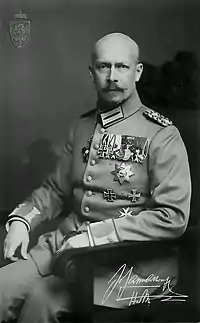 | |
| Born | 8 December 1857 Schwerin, Mecklenburg-Schwerin |
| Died | 20 February 1920 (aged 62) Schloß Wiligrad near Lübstorf, Germany |
| Spouse | Princess Elisabeth Sybille of Saxe-Weimar-Eisenach Princess Elisabeth of Stolberg-Rossla |
| House | House of Mecklenburg-Schwerin |
| Father | Frederick Francis II, Grand Duke of Mecklenburg |
| Mother | Princess Augusta Reuss of Köstritz |
| Religion | Lutheranism |
Birth and interests
Duke John Albert of Mecklenburg was born in Schwerin the fifth child of Frederick Francis II, Grand Duke of Mecklenburg and his first wife Princess Augusta Reuss of Köstritz (1822–1862). Duke John Albert was educated in Dresden, pursued a career in the Prussian Army and was well known for his love of sports.[2] He also developed an interest in Germany's colonial empire, co-founding the Pan-German League and becoming president of the German Colonial Society in 1895.[3]
Regencies
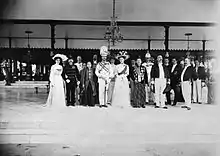
Following the death of his brother Frederick Francis III, Grand Duke of Mecklenburg on 10 April 1897, Duke John Albert was appointed regent for his young nephew the new Grand Duke, Frederick Francis IV after his older brother Duke Paul Frederick had renounced his claim to the regency. He ruled as regent until his nephew came of age on 9 April 1901 when he assumed personal control of the Grand Duchy.[4]
On 28 May 1907, Duke John Albert was elected regent of the Duchy of Brunswick following the death of Prince Albert of Prussia by the state's diet, accepting the offer he arrived in Brunswick on 5 June 1907.[5] The reason for the regency in Brunswick was that in 1884 when William, Duke of Brunswick died his distant cousin and heir Ernest Augustus, Crown Prince of Hanover was prevented from taking over the duchy because he refused to renounce his claim to the throne of the Kingdom of Hanover which had been annexed by Prussia in 1866.[6]
Shortly after assuming the regency, Duke John Albert would walk Brunswick in civilian clothes visiting museums, libraries and other institutions in the duchy, asking questions of people to discover their living conditions. After he became too well known to walk unnoticed he established a weekly audience where people could go and present a petition to him. Duke John Albert also cut down on the expenses of the royal household by cutting the number of servants and retainers to the minimum needed to run the household.[7]
The regency came to an end on 1 November 1913 when Ernest Augustus, Crown Prince of Hanover's son Ernest Augustus was permitted to ascend to Duchy following his marriage to Princess Victoria Louise of Prussia the only daughter of the German Emperor William II which helped heal the rift between the houses of Hanover and Hohenzollern.[8]
War years
During the First World War Duke John Albert was active with the German Colonial Society in defending the Germany's colonial possessions from suggestions that they should be abandoned.[9] On 2 September 1917 he was appointed honorary chairman of the pro war Fatherland Party.[10]
Duke John Albert died in 1920 in Wiligrad castle near Lübstorf aged 62.
Marriages
John Albert was married twice firstly in Weimar on 6 November 1886 to Princess Elisabeth Sybille of Saxe-Weimar-Eisenach (1854–1908) the daughter of Charles Alexander, Grand Duke of Saxe-Weimar-Eisenach. He was married secondly in Brunswick on 15 December 1909 to Princess Elisabeth of Stolberg-Rossla (1885–1969), who would following his death marry his half brother Duke Adolf Friedrich in 1924. Both of John Albert's marriages were childless.[1]
Ojimukoka
Ojimukoka, a small settlement, postoffice and railway station in Namibia, was renamed Johann - Albrechtshöhe, and then simply Albrechts in his honour.[11]
Honours
- German decorations[12]
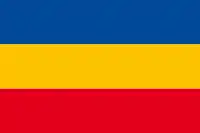 Mecklenburg:
Mecklenburg:
- Grand Cross of the Wendish Crown, with Collar and Crown in Ore
- Grand Cross of the Griffon
- Memorial Medal for Grand Duke Friedrich Franz III
- Commemorative Medal for the Battle of Loigny-Poupry
.svg.png.webp) Baden:[13]
Baden:[13]
- Knight of the House Order of Fidelity, 1890
- Knight of the Order of Berthold the First, 1890
.svg.png.webp) Bavaria: Knight of St. Hubert, 1906[14]
Bavaria: Knight of St. Hubert, 1906[14]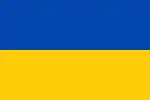 Brunswick: Grand Cross of Henry the Lion, 1898[15]
Brunswick: Grand Cross of Henry the Lion, 1898[15].svg.png.webp)
.svg.png.webp)
.svg.png.webp) Ernestine duchies: Grand Cross of the Saxe-Ernestine House Order
Ernestine duchies: Grand Cross of the Saxe-Ernestine House Order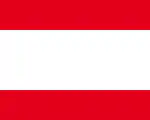 Hesse-Darmstadt: Grand Cross of the Ludwig Order, 12 October 1865[16]
Hesse-Darmstadt: Grand Cross of the Ludwig Order, 12 October 1865[16] Lippe: Cross of Honour of the House Order of Lippe, 1st Class
Lippe: Cross of Honour of the House Order of Lippe, 1st Class Oldenburg: Grand Cross of the Order of Duke Peter Friedrich Ludwig, with Collar
Oldenburg: Grand Cross of the Order of Duke Peter Friedrich Ludwig, with Collar.svg.png.webp) Kingdom of Prussia:
Kingdom of Prussia:
- Knight of Honour of the Johanniter Order, 15 February 1884[17]
- Knight of the Black Eagle, with Collar
- Grand Cross of the Red Eagle

 Reuss: Cross of Honour 1st Class
Reuss: Cross of Honour 1st Class.svg.png.webp) Saxe-Weimar-Eisenach: Grand Cross of the White Falcon, 1878[18]
Saxe-Weimar-Eisenach: Grand Cross of the White Falcon, 1878[18].svg.png.webp) Saxony: Knight of the Rue Crown[19]
Saxony: Knight of the Rue Crown[19] Württemberg: Grand Cross of the Württemberg Crown, 1892[20]
Württemberg: Grand Cross of the Württemberg Crown, 1892[20]
- Foreign decorations[12]
 Emirate of Bukhara: Order of the Star of Bukhara, 1st Class
Emirate of Bukhara: Order of the Star of Bukhara, 1st Class Principality of Bulgaria:
Principality of Bulgaria:
 Denmark: Knight of the Elephant, 9 June 1898[21]
Denmark: Knight of the Elephant, 9 June 1898[21].svg.png.webp) Kingdom of Greece: Grand Cross of the Redeemer
Kingdom of Greece: Grand Cross of the Redeemer.svg.png.webp) Empire of Japan:
Empire of Japan:
- Grand Cordon of the Order of the Chrysanthemum, 23 July 1894[22]
- Grand Cordon of the Rising Sun, with Paulownia Flowers
 Netherlands:
Netherlands:
- Grand Cross of the Netherlands Lion
- Wedding Medal of Queen Wilhelmina and Duke Henry of Mecklenburg-Schwerin, 1901
.svg.png.webp) Ottoman Empire:
Ottoman Empire:
- Order of Glory
- Order of Osmanieh, 1st Class
 Beylik of Tunis: Grand Cordon of the Order of Glory
Beylik of Tunis: Grand Cordon of the Order of Glory Persian Empire: Order of the Lion and the Sun, 1st Class
Persian Empire: Order of the Lion and the Sun, 1st Class.svg.png.webp) Kingdom of Portugal: Grand Cross of the Tower and Sword
Kingdom of Portugal: Grand Cross of the Tower and Sword Kingdom of Romania: Grand Cross of the Order of Carol I, with Collar
Kingdom of Romania: Grand Cross of the Order of Carol I, with Collar Russian Empire:
Russian Empire:
- Knight of St. Andrew[19]
- Knight of St. Vladimir, 1st Class
- Knight of St. George, 1st Class
.svg.png.webp) Siam:
Siam:
.svg.png.webp)
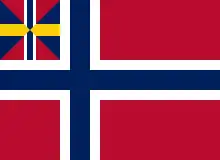 Sweden-Norway: Knight of the Seraphim, 18 September 1897[23]
Sweden-Norway: Knight of the Seraphim, 18 September 1897[23].svg.png.webp) Sultanate of Zanzibar: Order of the Brilliant Star of Zanzibar, 1st Class
Sultanate of Zanzibar: Order of the Brilliant Star of Zanzibar, 1st Class
Ancestry
| Ancestors of Duke John Albert of Mecklenburg | |||||||||||||||||||||||||||||||||||||||||||||||||||||||||||||||||||||||||||||||||||||||||||||||||||||||||||||||||||||||||||||||||||||||||||||||||||||||||||||||||||||||||||||||||||||||||||||||||||||||||||||||||||||||||||||||||||||||||||||||||||||||||||||||||||||||||||||||||||||||||
|---|---|---|---|---|---|---|---|---|---|---|---|---|---|---|---|---|---|---|---|---|---|---|---|---|---|---|---|---|---|---|---|---|---|---|---|---|---|---|---|---|---|---|---|---|---|---|---|---|---|---|---|---|---|---|---|---|---|---|---|---|---|---|---|---|---|---|---|---|---|---|---|---|---|---|---|---|---|---|---|---|---|---|---|---|---|---|---|---|---|---|---|---|---|---|---|---|---|---|---|---|---|---|---|---|---|---|---|---|---|---|---|---|---|---|---|---|---|---|---|---|---|---|---|---|---|---|---|---|---|---|---|---|---|---|---|---|---|---|---|---|---|---|---|---|---|---|---|---|---|---|---|---|---|---|---|---|---|---|---|---|---|---|---|---|---|---|---|---|---|---|---|---|---|---|---|---|---|---|---|---|---|---|---|---|---|---|---|---|---|---|---|---|---|---|---|---|---|---|---|---|---|---|---|---|---|---|---|---|---|---|---|---|---|---|---|---|---|---|---|---|---|---|---|---|---|---|---|---|---|---|---|---|---|---|---|---|---|---|---|---|---|---|---|---|---|---|---|---|---|---|---|---|---|---|---|---|---|---|---|---|---|---|---|---|---|---|---|---|---|---|---|---|---|---|---|---|---|---|---|---|---|
| |||||||||||||||||||||||||||||||||||||||||||||||||||||||||||||||||||||||||||||||||||||||||||||||||||||||||||||||||||||||||||||||||||||||||||||||||||||||||||||||||||||||||||||||||||||||||||||||||||||||||||||||||||||||||||||||||||||||||||||||||||||||||||||||||||||||||||||||||||||||||
References
- Huberty, Michel; Alain Giraud; F. B. Magdelaine (1945). L'Allemagne Dynastique, Tome VI : Bade-Mecklembourg. A. Giraud. pp. 239, 240. ISBN 978-2-901138-06-8.
- "Art and Utility Linked; German Painters Make Their Skill Serve Many Ends". The New York Times. 12 July 1896. p. 10.
- Winkler, Heinrich August; Sager, Alexander (2006). Germany: the long road west. Vol. 1. OUP Oxford. p. 316. ISBN 0-19-926597-6.
- "Celebration in Schwerin" (PDF). The New York Times. 10 April 1901. Retrieved 24 October 2007.
- The Statesman's year book. 1913. p. 911.
- "Cable News". Fielding Star. 1 June 1907. p. 4.
- "Brunswick Ruler a Modern Haroun". The New York Times. 8 July 1907. p. 4.
- Heraldica.org
- "German Colonies". Grey River Angus. 4 July 1907. p. 3.
- Fischer, Fritz (1967). Germany's aims in the First World War. p. 461. ISBN 9780393053470.
- "Is there any value in stamps collection". Archived from the original on 2 April 2016. Retrieved 22 April 2010.
- Grossherzoglich Mecklenburg-Schwerinscher Staatskalendar, 1908, p. 3
- Hof- und Staats-Handbuch des Großherzogtum Baden (1892), "Großherzogliche Orden" pp. 62, 76
- Hof- und Staats-Handbuch des Königreichs Bayern (1906), "Königliche-Orden" p. 11
- Hof- und Staatshandbuch des Herzogtums Braunschweig für das Jahr 1897, "Herzogliche Orden Heinrich des Löwen" p. 10
- Hof- und Staats-Handbuch des Großherzogtum Hessen (1879), "Großherzogliche Orden und Ehrenzeichen" p. 12
- "Johanniter-orden", Königlich Preussische Ordensliste (in German), vol. 1, Berlin, 1886, p. 1047
{{citation}}: CS1 maint: location missing publisher (link) - Staatshandbuch für das Großherzogtum Sachsen / Sachsen-Weimar-Eisenach (1900), "Großherzogliche Hausorden" p. 16
- Justus Perthes, Almanach de Gotha (1919) p. 19
- Hof- und Staats-Handbuch des Königreich Württemberg (1907), "Königliche Orden" p. 29
- Jørgen Pedersen (2009). Riddere af Elefantordenen, 1559–2009 (in Danish). Syddansk Universitetsforlag. p. 320. ISBN 978-87-7674-434-2.
- 刑部芳則 (2017). 明治時代の勲章外交儀礼 (PDF) (in Japanese). 明治聖徳記念学会紀要. p. 149.
- Sveriges statskalender (in Swedish), 1905, p. 441, retrieved 6 January 2018 – via runeberg.org